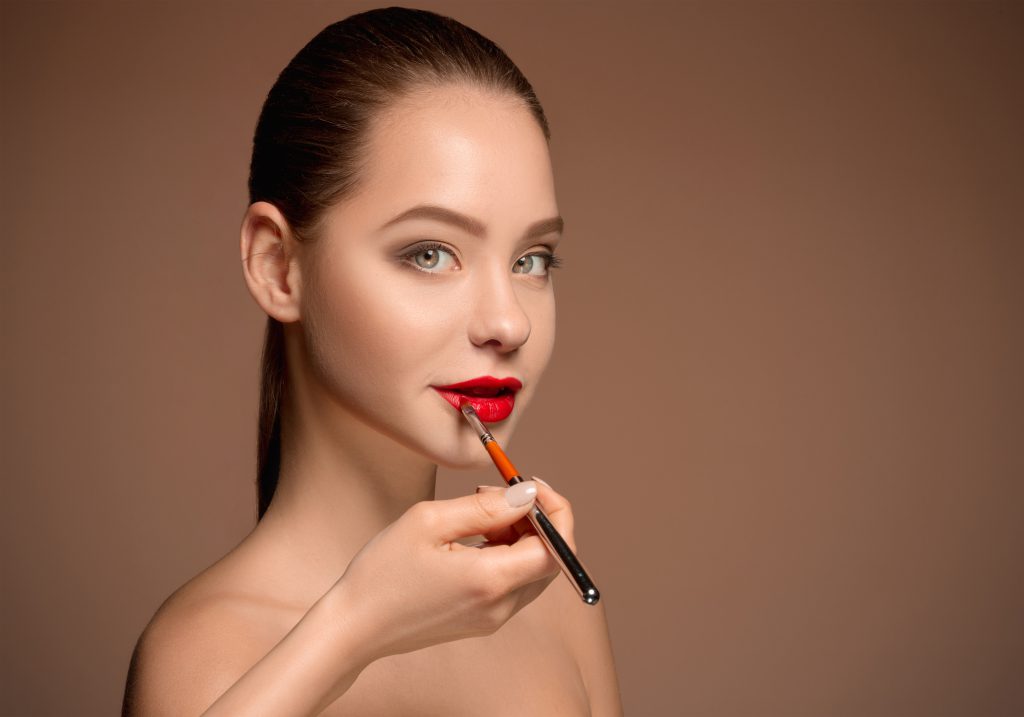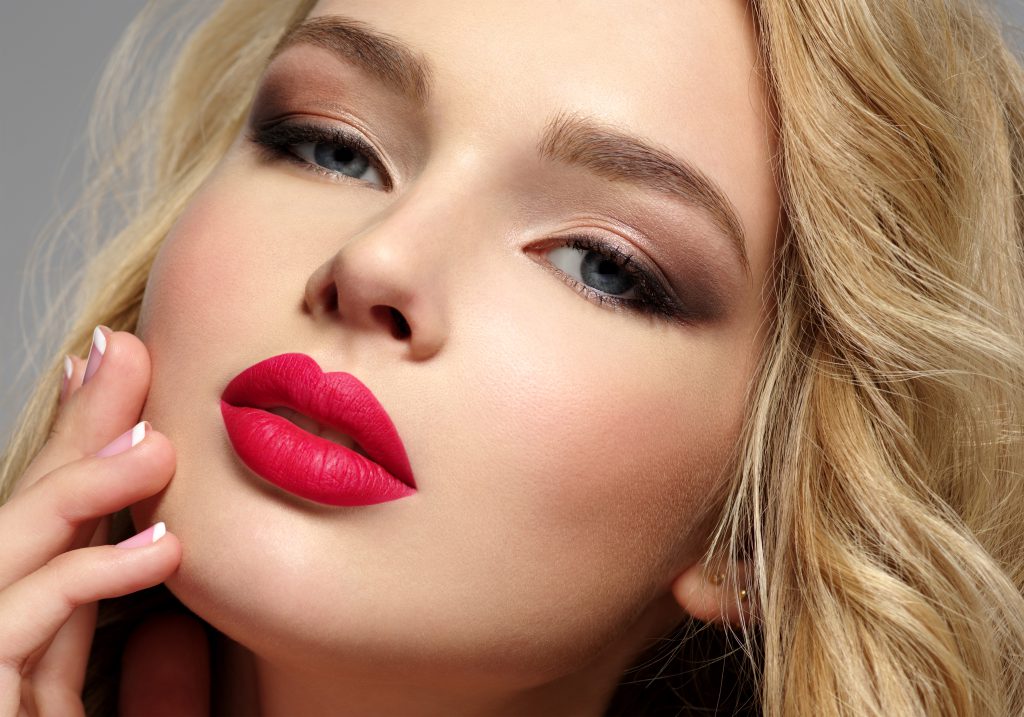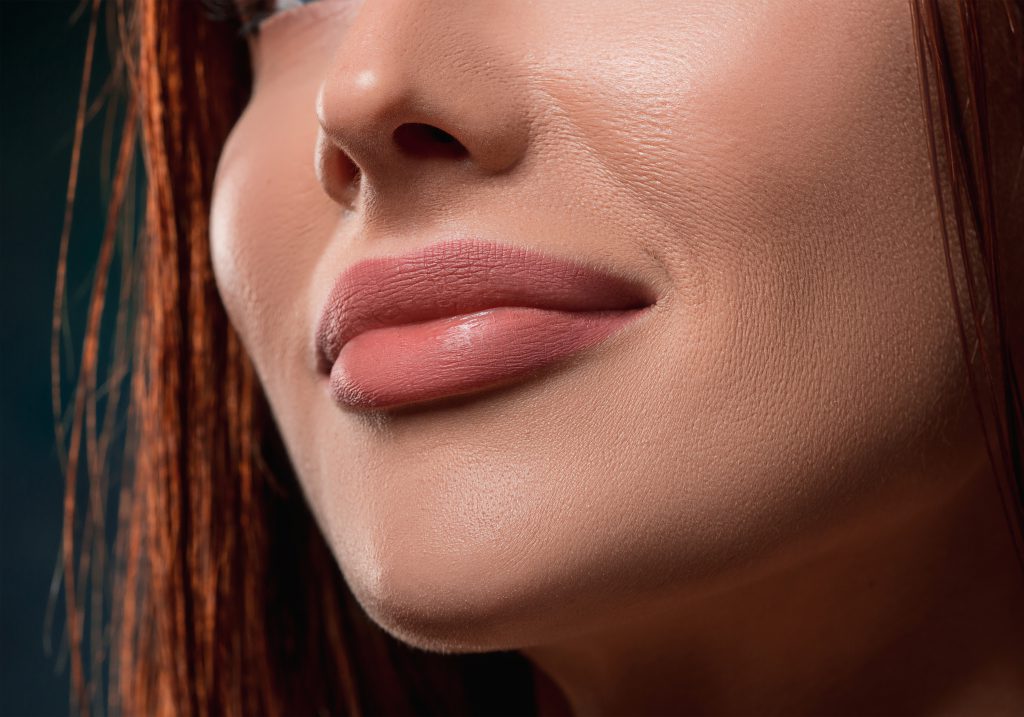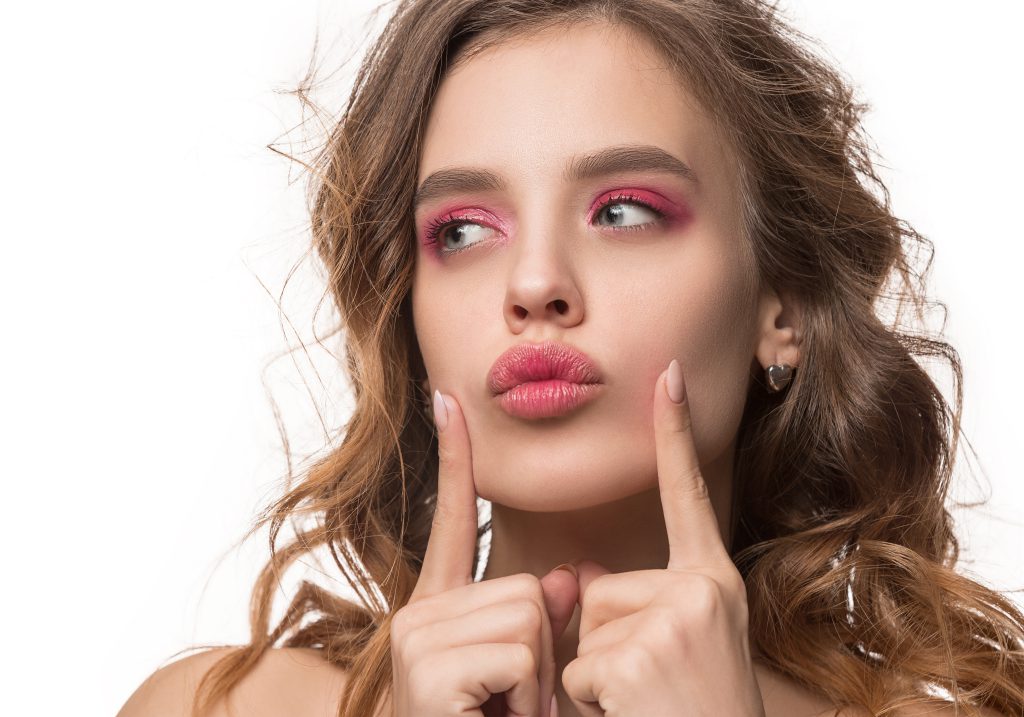Permanent lip makeup and some of its advantages and disadvantages (5 tips)
In this article, we will talk about permanent lip makeup and some of its advantages and disadvantages, which has gained many fans.
What you read in this article:
- What is permanent lip makeup?
- What are the ingredients used in permanent lip makeup?
- What is the advantage of permanent lip makeup?
- What are the disadvantages of permanent lip makeup?
- What is the care after permanent lip makeup?
- Is permanent lip makeup available in Fatima beauty salon?
What is permanent lip makeup?
Permanent lip makeup, also known as lip micropigmentation or permanent lip color, is a cosmetic tattooing procedure designed to enhance the appearance of the lips by adding color and definition. The goal is to create a long-lasting lip color that mimics the look of lipstick or lip liner without the need for daily application.
Here’s an overview of the process:
- Consultation: Before the procedure, you typically have a consultation with a trained and qualified cosmetic tattoo artist. During this consultation, you can discuss your desired lip color, shape, and overall goals.
- Color Selection: The artist will help you choose a suitable lip color based on your preferences and skin tone. It’s important to select a color that complements your natural features.
- Procedure: The actual procedure involves the use of a tattoo machine or a manual hand tool to deposit pigment into the upper layers of the skin. The artist carefully outlines and fills in the lips to achieve the desired shape and color.
- Healing: After the procedure, there is a healing period during which the skin may scab and peel. It’s essential to follow the aftercare instructions provided by the artist to ensure proper healing and to maintain the integrity of the pigment.
- Touch-ups: Permanent makeup may fade over time due to factors such as sun exposure, skin exfoliation, and the body’s natural aging process. Periodic touch-ups may be necessary to maintain the color and shape.
Permanent lip makeup can be a convenient option for individuals who want to save time on their daily makeup routine or those who have difficulty applying regular lipstick or lip liner. However, it’s important to choose a skilled and experienced professional for the procedure, as the results are long-lasting and semi-permanent, and any mistakes can be challenging to correct.

What are the ingredients used in permanent lip makeup?
The ingredients used in permanent lip makeup, also known as micropigmentation or cosmetic tattooing, typically include pigments and carrier solutions. The pigments provide color, and the carrier solutions help disperse the pigments and facilitate their application into the skin. It’s important to note that the specific formulations can vary among different manufacturers and practitioners. Here are some common components:
- Pigments: These are the colorants used to create the desired lip color. Pigments are often made from a combination of organic and inorganic compounds. Iron oxide is a commonly used inorganic pigment in permanent makeup because it is stable and tends to be well-tolerated by the body. Organic pigments may also be used, but they can have a higher risk of allergic reactions.
- Glycerin or Propylene Glycol: These are common carrier solutions used to dilute and carry the pigment. They help make the pigment easier to work with during the tattooing process. Glycerin and propylene glycol are both relatively safe and commonly used in cosmetic formulations.
- Distilled Water: Water is often used to dilute pigments and create a workable consistency. Distilled water is preferred to minimize the risk of introducing impurities into the pigment mixture.
- Isopropyl Alcohol: This is often used to sterilize the skin before the procedure and may be included in the pigment mixture to help with the application process. It evaporates quickly, aiding in the drying of the pigment on the skin.
It’s important to note that the safety and compatibility of pigments can vary, and allergic reactions are a potential risk. Before undergoing a permanent lip makeup procedure, individuals are typically advised to undergo patch testing to check for any allergic sensitivities to the pigments.
Additionally, regulations and standards regarding the ingredients used in permanent makeup can vary by region. It’s crucial to choose a trained and qualified professional who adheres to hygiene and safety standards, uses high-quality pigments, and provides thorough information about the procedure and aftercare. Always consult with the practitioner about the specific ingredients they use and ask for any relevant information on potential risks and complications.

What is the advantage of permanent lip makeup?
Permanent lip makeup, or lip micropigmentation, offers several advantages for individuals seeking a long-lasting solution to enhance the appearance of their lips. Some of the key advantages include:
- Time-Saving: One of the primary benefits is the time saved on daily makeup application. With permanent lip makeup, individuals don’t need to spend time applying lipstick or lip liner each day, making it a convenient option for those with busy lifestyles.
- Consistent Appearance: Permanent lip makeup provides a consistent and defined lip color. This can be especially beneficial for individuals with uneven lip pigmentation, scars, or those looking to enhance the natural shape of their lips.
- Water and Smudge-Resistant: Unlike traditional lip makeup that may smudge or wear off throughout the day, permanent lip makeup is resistant to water and smudging. This makes it particularly appealing for activities like swimming or exercising.
- No Need for Reapplication: Since the pigments are implanted into the skin, the color remains intact throughout the day, eliminating the need for frequent reapplication. This can be advantageous in situations where regular touch-ups are not practical.
- Enhanced Lip Definition: Permanent lip makeup can help create or enhance lip definition, providing a more youthful and aesthetically pleasing appearance. It can be used to define the lip border, add fullness, or correct asymmetry.
- Concealing Imperfections: The procedure can be used to conceal imperfections such as scars or discoloration on the lips, improving overall lip aesthetics.
- Customization: Permanent lip makeup allows for customization of lip color, shape, and intensity. This customization ensures that the results align with the individual’s preferences and complements their natural features.
- Long-Lasting Results: While the term “permanent” is used, it’s important to note that the results are semi-permanent and may fade over time. However, with proper care and occasional touch-ups, the benefits can be long-lasting compared to traditional makeup.

What are the disadvantages of permanent lip makeup?
While permanent lip makeup, also known as lip micropigmentation or cosmetic tattooing, can offer many benefits, there are also potential disadvantages and considerations that individuals should be aware of before deciding to undergo the procedure. Here are some of the disadvantages:
- Permanent or Semi-Permanent Nature: Despite the term “permanent,” the results are often semi-permanent, as the pigments may fade over time. The longevity of the results varies among individuals and depends on factors such as skin type, exposure to sunlight, and individual body chemistry.
- Color Changes and Fading: The lip color may change or fade over time due to factors such as sun exposure, skin exfoliation, and the body’s natural aging process. Periodic touch-ups are often required to maintain the vibrancy of the color.
- Allergic Reactions: Some individuals may be allergic to the pigments used in permanent makeup. It’s crucial to undergo patch testing before the procedure to check for any allergic sensitivities. Allergic reactions can cause redness, swelling, and discomfort.
- Infection Risk: As with any tattooing procedure, there is a risk of infection. It’s essential to choose a qualified and hygienic practitioner who follows strict sterilization procedures to minimize this risk.
- Uneven Results: Achieving perfectly symmetrical and even results can be challenging. Factors such as skin texture, lip movement, and individual healing responses may contribute to slight asymmetry.
- Discomfort During Procedure: While topical anesthetics are often used to minimize discomfort, some individuals may experience mild pain or discomfort during the lip micropigmentation procedure.
- Color Changes Over Time: The original chosen color may evolve over time due to factors such as the skin’s natural undertones and the pigment’s interaction with the skin. It’s important to discuss the expected color changes with the practitioner during the consultation.
- Cost and Maintenance: Permanent lip makeup is an investment, and the initial cost can be higher compared to traditional makeup. Additionally, periodic touch-ups are necessary to maintain the results, adding to the overall cost.
- Removal Challenges: While permanent makeup is considered semi-permanent, its removal can be challenging. Correcting or removing unwanted results may require additional procedures, such as laser treatments.
Before deciding to undergo permanent lip makeup, individuals should thoroughly research and choose a qualified and experienced practitioner. It’s important to have realistic expectations, be aware of the potential risks, and carefully consider whether the benefits outweigh the disadvantages for their specific preferences and lifestyle.

What is the care after permanent lip makeup?
Proper care after permanent lip makeup, also known as lip micropigmentation or cosmetic tattooing, is crucial to ensure optimal healing and long-lasting results. Here are general guidelines for post-procedure care:
- Follow Aftercare Instructions: Your practitioner will provide specific aftercare instructions. Follow these guidelines carefully to promote proper healing and maintain the integrity of the pigments. Instructions may include details about cleaning, moisturizing, and avoiding certain activities.
- Keep the Area Clean: Gently clean the treated area with a mild, fragrance-free soap and water. Use a clean, soft cloth or cotton pad to avoid irritation. Be cautious not to rub or scrub the treated area aggressively.
- Avoid Moisture Exposure: In the first few days after the procedure, avoid activities that may expose the lips to excessive moisture, such as swimming, hot tubs, saunas, and prolonged showers. Excessive moisture can affect the healing process.
- Apply Recommended Ointment or Balm: Your practitioner may recommend a specific ointment or lip balm to keep the treated area moisturized. Apply this product as directed to prevent excessive dryness and promote healing.
- Avoid Touching or Picking: Refrain from touching or picking at the treated area. Let the scabs or flakes naturally slough off during the healing process. Touching the area with dirty hands can introduce bacteria and impede healing.
- Protect from Sun Exposure: Limit sun exposure to the treated area, especially during the initial healing phase. UV rays can fade the pigments and increase the risk of complications. If sun exposure is unavoidable, use a lip balm with SPF or wear a wide-brimmed hat.
- Avoid Makeup and Skincare Products: In the immediate post-procedure period, avoid applying regular makeup, lipsticks, or skincare products directly on the treated area. Wait until the lips are fully healed before reintroducing these products.
- Skip Exfoliants and Harsh Products: Avoid using exfoliating products or harsh skincare ingredients on or around the treated area during the initial healing period. These products can interfere with the healing process and may cause irritation.
- Attend Follow-Up Appointments: Schedule and attend any follow-up appointments recommended by your practitioner. These appointments may involve touch-ups and allow the practitioner to assess the healing process.
- Be Patient: Healing time varies among individuals. Be patient and allow the lips to go through the natural healing stages. Avoid rushing the process, and don’t be alarmed by temporary changes in color or appearance.

Is permanent lip makeup available in Fatima beauty salon?
Yes. The Fatima beauty salon team provides all permanent lip makeup services to you dear ones in a completely specialized manner with a polite and professional staff.
